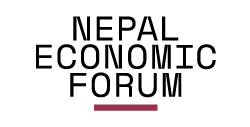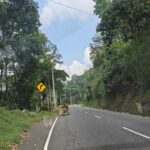Trekking stands as Nepal’s premier tourism offering, drawing people from around the globe. It has attracted adventurers, nature enthusiasts and spiritual seekers to the monumental Himalayas, for decades. Walking on the deserted trails, sandwiched between the towering snow-peaked mountains, and clear rivers next to woods gives a surreal feeling. Trekking is both extraordinary and thrilling – making you push through the limits that ultimately provide breathtaking natural landscapes and deep personal reflections. The times of dawn and dusk during these hikes are especially enchanting, providing a restorative connection with nature. That is why trekking is not only a physical journey, but also an emotional and spiritual one.
Despite being similar to a lot of countries, trekking in Nepal is unique in many ways. Trekking in Nepal is not just about nature—it is also a deep dive into culture, history, and spirituality. You can trek through ancient villages, meet native communities, and observe a way of life that persists unchanged for centuries. From the iconic Everest base camp trek and the challenging Annapurna Circuit to less-traveled routes such as the Kanchenjunga trek, the experience is unique and memorable every time!
Balancing accessibility and authenticity
As Nepal surges forward with infrastructure development, there is a concern that some of its trekking routes have lost their original magic. Trekking in Nepal faces the threats of authenticity and sustainability from commercialization and unplanned development associated with ever-increasing road access. Many trails have been shortened today owing to road expansion, and helicopter services allow travelers to skip long hikes. Previously, trekkers had to walk for weeks to reach remote places. While this has facilitated trekking for those with limited time, it has diluted the experience of walking through undisturbed nature and cultural terrain with shortened routes and altered landscapes.
The Annapurna Circuit, once a 21-day through-hike that threaded its way through ancient villages and dramatic terrains, has whittled down to an all-too-common itinerary. Today, new roads have brought the trekking portion down to less than half. Similarly, in the Everest region as leisure, helicopter drops to Everest Base Camp have become so common that you can fly in and skip days of trekking. While these developments have made Nepal’s trekking routes more accessible, they also have raised concerns about over-commercialization, pollution, and a loss of traditional trekking culture. If we are not cautious with such changes, we might lose the charm of these destinations in the name of making them accessible.
This transformation has ignited discussions; some contend that shorter trekking times lessen the overall experience, whereas others value the enhanced accessibility for a wider range of clientele. Nonetheless, it is crucial to acknowledge and adjust to these developments. As the government opens up new destinations, it is important to have clarity in the trekking products offered. Simultaneously, a global trend is coming towards exclusive, sustainable and luxury trekking experiences. Travelers want unique, ecologically sensitive, culturally immersive journeys. Therefore, it is even more important to develop trekking routes that manage both accessibility and authenticity, thereby ensuring that future generations can appreciate the nation’s winding landscapes and vibrant ways of life.
Trekking 2.0
Nepal should adapt and innovate to keep up with changing trekking trends. The evolution of trekking in Nepal has largely been influenced by:
Affordability and Accessibility: The availability of technology has both reduced the cost and made the planning for trekking in Nepal easier. Tourists used to depend fully on travel agencies to plan their trips. Fast-forward to today: with online information, trekkers can arrange direct communication with local guides, book accommodations and research routes without intermediaries. They can be found on platforms such as Booking.com or Facebook pages and immediate social media communication has allowed travelers to tailor their trips to their budgets and preferences.
Additionally, trekking equipments are widely available at a variety of prices catering every type of traveler, making trekking more accessible. From budget second-hand gears to top-of-the-line professional equipments, you can easily get gears for every type of traveler. Not to mention the enhanced road connections and transit options making getting to trailheads easier than it’s ever been.
Changing Seasonality Patterns: Traditionally, the trekking seasons in Nepal were well-defined: Spring (March-May) and autumn (September-November) were the peak times whereas winter and monsoon had the lowest number of visitors. This pattern, however, is changing over time. Trekking has also opened up year-round maybe due to climate change or changing traveler choice. Some trekkers now have a tendency to avoid crowds by opting for off-season months also attributing to grabbing best deals during the off-seasons, and others come for specific seasonal experiences, such as snow trekking in winter or lush greens during the monsoon.
The increasing number of Indian and Chinese tourists has similarly transformed seasonality. Holidays with arbitrary dates and weather preferences from their home countries result in different travel patterns, giving rise to more diverse trekking trends. This necessitates the need for trekking enterprises to follow the changing patterns by providing new packages and services that cater to off-season travelers.
Domestic and Diaspora Tourists: Trekking through Nepal is no longer the exclusive domain of international visitors. The trekking economy has also seen a shift where domestic travelers and the Nepali diaspora have started to contribute significantly. In 2023, Nepal generated approximately USD 1.7 billion from domestic tourism, nearly double the USD 633.7 million from international visitors, underscoring the significance of this segment (WTTC, 2024). Increasingly, young Nepalis are discovering their own country; many Nepalis abroad return for trekking holidays. Social media platforms such as TikTok and Instagram have been crucial in promoting Nepal’s trekking routes among local tourists. This pivot opens a possibility to create an affordable trekking experience for the local market, encourage responsible tourism, and initiate community-based tourism.
Blend of Complementing Activities: Gone are the days when trekking meant walking from point A to point B. Today’s travelers are looking for multi-dimensional experiences. Many of the new trekking routes now include wellness retreats, yoga and meditation classes, sound healing and spa treatments. Cultural interactions like learning traditional cooking from local communities, or taking part in village festivals, provide added levels of engagement. For example, while Poon Hill trek is renowned for one of the best viewpoints to see sunrise, it also has many homestays and thus offers cultural immersion as you walk village to village, homestay to homestay. Likewise, visitors to the Langtang region can engage in Buddhist rituals at monasteries, offering a spiritual aspect to the trek.
Ensuring Nepal’s future as a world-class Trekking destination
So, for Nepal to maintain its reputation as a world-class trekking destination, certain measures must be taken:
Planned and Sustainable Development: Infrastructure development is inevitable, but it needs to complement, not ruin, trekking experiences. Road networks need to be expanded but should take care to preserve trekking trails and scenic viewpoints. Before the conclusion of extensive infrastructure work in any trekking region, the carrying capacity of the area must be examined and no further approvals should be granted. Building regulations should not be left to the whims of the time, and local governments should be enforcing buildings codes, new developments and proper waste management. This not only ensures the sustainability of the area but also promotes premium-ness and exclusivity in its own terms.
Improving Quality of Services: The hospitality industry has grown significantly; however, maintaining a consistent level of service quality continues to pose difficulties, particularly due to the current state of workforce migration. It is essential to tackle the lack of skilled workers to ensure smooth operations and enhance guest satisfaction. The tourism sector needs to invest in creating a battery of workforce through training to keep the hospitality industry in Nepal competitive.
Maintaining Basic Standards: Hotel and lodges at the very least should offer you clean rooms, clean bathrooms, hot water, and good Wi-Fi (preferably). Prioritizing these essentials, instead of investing in luxury add-ons, getting these basic services right will improve trekkers experience and drive good reviews.
Embracing Digitalization: There is huge potential to promote Nepal’s trekking industry through digitalization. Leveraging digital platforms can significantly amplify both reach and engagement. Travelers are also influenced by social media, online booking platforms and travel review sites. Digital asset mapping, QR-coded information boards and near time updates on the state of trails improve the experience of trekkers and ensure their safety.
Nepal is the home to some of the most magnificent trekking routes around the globe. Each track has something unique to offer — stunning scenery, cultural experiences, and even spiritual benefits. But as the burgeoning tourism industry faces increasing scrutiny, it must also be noted that Nepal has no monopoly on the magic of trekking in the Himalayas; as the landscape changes, Nepal must strike a careful balance between development and conservation so future generations can experience it. Therefore, by promoting sustainable tourism practices, professional quality of service and digitization, Nepal can be the mecca for trekking in the years to come.
Sudip Bhaju is a private sector development expert with 15+ years of experience driving market-led transformations across South Asia and Rwanda. He also serves as the Director at Nepal Economic Forum.





